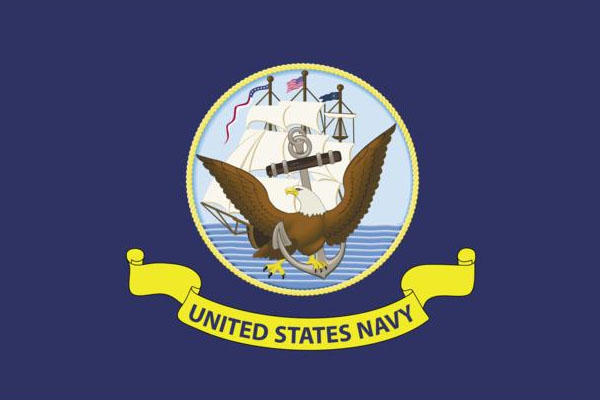The Department of the Navy Seal, created in 1957, was to serve as the main feature of the official United States Navy flag, adopted two years later. The flag did not pass through an evolutionary development as was the case with the Navy seal.
Ships of the earliest period in the Nation's naval history wore a variety of flags, including the striped Grand Union, and those bearing a pine tree or rattlesnake. However, these various banners may be considered steps in the genesis of the national ensign, the "Stars and Stripes," rather than forebears of a specific flag for the Navy.
Toward the end of the nineteenth century the Infantry Battalion flag (above left) was introduced for use by naval landing forces. This was a blue flag with a white diamond shaped device in the center and a blue foul anchor superimposed on the diamond. For more than sixty years, the Infantry Battalion flag served as the unofficial Navy flag in drill formations and parades and at other ceremonies. An official Navy flag, truly representative of the Navy's operating forces at sea, was authorized by Presidential order 24 April 1959:
The flag for the United States Navy is 4 feet 4 inches hoist by 5 feet 6 inches fly, of dark blue material, with yellow fringe, 2 1/2 inches wide. In the center of the flag is a device 3 feet 1 inch overall consisting of the inner pictorial position of the seal of the Department of the Navy (with the exception that a continuation of the sea has been substituted for the land area), in its proper colors within a circular yellow rope edging, all 2 feet 6 inches in diameter above a yellow scroll inscribed "United States Navy," in dark blue letters.
Unlike the national ensign, commission pennant, union jack, and admiral's broad pennant which fly from gaff, mast, or staff on board naval vessels, the flag of the United States Navy is reserved for display purposes and is carried by an honor guard on ceremonial occasions.



